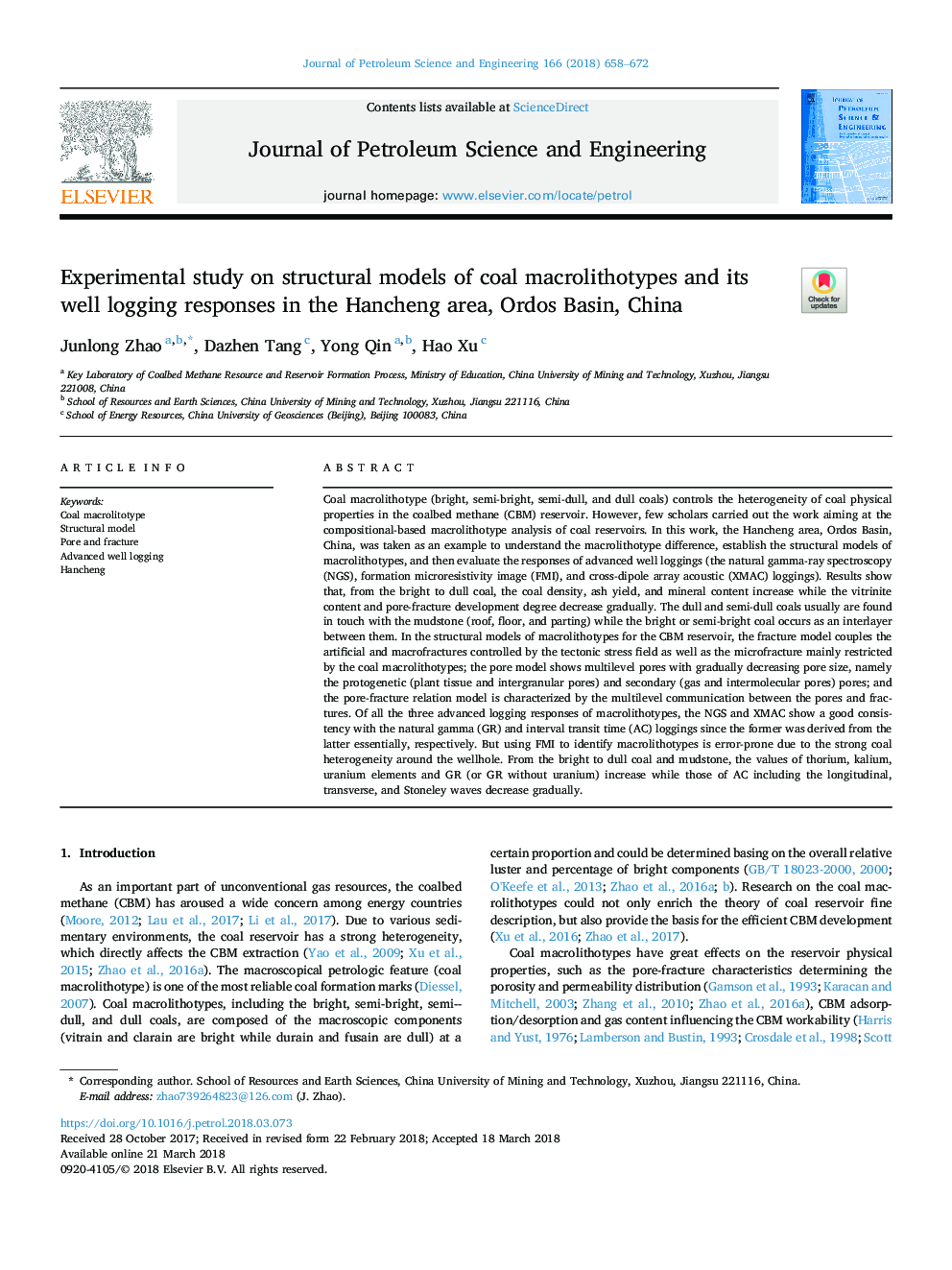| کد مقاله | کد نشریه | سال انتشار | مقاله انگلیسی | نسخه تمام متن |
|---|---|---|---|---|
| 8124957 | 1522775 | 2018 | 15 صفحه PDF | دانلود رایگان |
عنوان انگلیسی مقاله ISI
Experimental study on structural models of coal macrolithotypes and its well logging responses in the Hancheng area, Ordos Basin, China
دانلود مقاله + سفارش ترجمه
دانلود مقاله ISI انگلیسی
رایگان برای ایرانیان
کلمات کلیدی
موضوعات مرتبط
مهندسی و علوم پایه
علوم زمین و سیارات
زمین شناسی اقتصادی
پیش نمایش صفحه اول مقاله

چکیده انگلیسی
Coal macrolithotype (bright, semi-bright, semi-dull, and dull coals) controls the heterogeneity of coal physical properties in the coalbed methane (CBM) reservoir. However, few scholars carried out the work aiming at the compositional-based macrolithotype analysis of coal reservoirs. In this work, the Hancheng area, Ordos Basin, China, was taken as an example to understand the macrolithotype difference, establish the structural models of macrolithotypes, and then evaluate the responses of advanced well loggings (the natural gamma-ray spectroscopy (NGS), formation microresistivity image (FMI), and cross-dipole array acoustic (XMAC) loggings). Results show that, from the bright to dull coal, the coal density, ash yield, and mineral content increase while the vitrinite content and pore-fracture development degree decrease gradually. The dull and semi-dull coals usually are found in touch with the mudstone (roof, floor, and parting) while the bright or semi-bright coal occurs as an interlayer between them. In the structural models of macrolithotypes for the CBM reservoir, the fracture model couples the artificial and macrofractures controlled by the tectonic stress field as well as the microfracture mainly restricted by the coal macrolithotypes; the pore model shows multilevel pores with gradually decreasing pore size, namely the protogenetic (plant tissue and intergranular pores) and secondary (gas and intermolecular pores) pores; and the pore-fracture relation model is characterized by the multilevel communication between the pores and fractures. Of all the three advanced logging responses of macrolithotypes, the NGS and XMAC show a good consistency with the natural gamma (GR) and interval transit time (AC) loggings since the former was derived from the latter essentially, respectively. But using FMI to identify macrolithotypes is error-prone due to the strong coal heterogeneity around the wellhole. From the bright to dull coal and mudstone, the values of thorium, kalium, uranium elements and GR (or GR without uranium) increase while those of AC including the longitudinal, transverse, and Stoneley waves decrease gradually.
ناشر
Database: Elsevier - ScienceDirect (ساینس دایرکت)
Journal: Journal of Petroleum Science and Engineering - Volume 166, July 2018, Pages 658-672
Journal: Journal of Petroleum Science and Engineering - Volume 166, July 2018, Pages 658-672
نویسندگان
Junlong Zhao, Dazhen Tang, Yong Qin, Hao Xu,